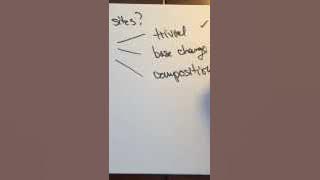Scheme theory | General topology | Algebraic varieties
Zariski topology
In algebraic geometry and commutative algebra, the Zariski topology is a topology which is primarily defined by its closed sets. It is very different from topologies which are commonly used in the real or complex analysis; in particular, it is not Hausdorff. This topology was introduced primarily by Oscar Zariski and later generalized for making the set of prime ideals of a commutative ring (called the spectrum of the ring) a topological space. The Zariski topology allows tools from topology to be used to study algebraic varieties, even when the underlying field is not a topological field. This is one of the basic ideas of scheme theory, which allows one to build general algebraic varieties by gluing together affine varieties in a way similar to that in manifold theory, where manifolds are built by gluing together charts, which are open subsets of real affine spaces. The Zariski topology of an algebraic variety is the topology whose closed sets are the algebraic subsets of the variety. In the case of an algebraic variety over the complex numbers, the Zariski topology is thus coarser than the usual topology, as every algebraic set is closed for the usual topology. The generalization of the Zariski topology to the set of prime ideals of a commutative ring follows from Hilbert's Nullstellensatz, that establishes a bijective correspondence between the points of an affine variety defined over an algebraically closed field and the maximal ideals of the ring of its regular functions. This suggests defining the Zariski topology on the set of the maximal ideals of a commutative ring as the topology such that a set of maximal ideals is closed if and only if it is the set of all maximal ideals that contain a given ideal. Another basic idea of Grothendieck's scheme theory is to consider as points, not only the usual points corresponding to maximal ideals, but also all (irreducible) algebraic varieties, which correspond to prime ideals. Thus the Zariski topology on the set of prime ideals (spectrum) of a commutative ring is the topology such that a set of prime ideals is closed if and only if it is the set of all prime ideals that contain a fixed ideal. (Wikipedia).


















